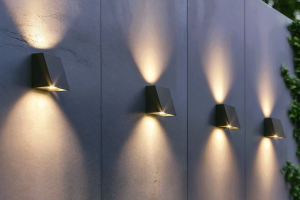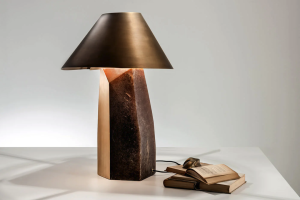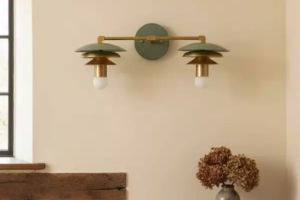Bauhaus design is a movement that emerged in Germany in the early 20th century, and it had a profound impact on various fields such as architecture, art, and design. The Bauhaus school, founded by Walter Gropius in 1919, aimed to bridge the gap between art and industry, and to create functional and aesthetically pleasing designs that could be mass-produced. One of the key aspects of Bauhaus design was its focus on simplicity, minimalism, and functionality.
Lighting played a crucial role in Bauhaus design, as it was seen as an essential element in creating a functional and aesthetically pleasing space. Bauhaus designers believed that lighting should not only provide illumination but also enhance the overall design of a space. They sought to create lighting fixtures that were both practical and visually appealing, using innovative materials and techniques.
The Origins of Bauhaus Design and Its Key Principles
The Bauhaus movement emerged in Germany in the aftermath of World War I, when there was a need for a new approach to design that could address the social and economic challenges of the time. The movement was influenced by various artistic and design movements, such as the Arts and Crafts movement and the De Stijl movement.
The key principles of Bauhaus design were functionality, simplicity, and minimalism. Bauhaus designers believed that form should follow function, meaning that the design of an object should be determined by its intended use. They also believed in using simple geometric shapes and clean lines to create designs that were visually appealing yet uncluttered.
The Role of Lighting in Bauhaus Design: Functionality and Aesthetics
In Bauhaus design, lighting was seen as an integral part of creating a functional and aesthetically pleasing space. Lighting fixtures were designed to provide adequate illumination while also enhancing the overall design of a room. Bauhaus designers believed that lighting should be integrated into the architecture and furniture of a space, rather than being treated as a separate element.
Bauhaus designers used various techniques to incorporate lighting into their work. They often used recessed lighting to create a seamless and unobtrusive look, and they also experimented with different materials and finishes to create interesting visual effects. The goal was to create lighting fixtures that were not only functional but also visually appealing, adding to the overall design of a space.
Bauhaus Lighting Designers and Their Contributions to the Movement
There were several notable Bauhaus lighting designers who made significant contributions to the movement. One of the most influential figures was Marianne Brandt, who was a student at the Bauhaus school and later became the head of the metal workshop. Brandt is best known for her iconic table lamp, which featured a simple geometric shape and a metal shade that could be adjusted to direct the light.
Another important figure in Bauhaus lighting design was Wilhelm Wagenfeld, who also studied at the Bauhaus school. Wagenfeld is best known for his iconic “Bauhaus Lamp,” which featured a glass shade and a metal base. The lamp became an iconic symbol of Bauhaus design and is still produced today.
The Impact of Bauhaus Lighting on Modern Design and Architecture
The influence of Bauhaus lighting design can still be seen in contemporary design and architecture. Many modern designers draw inspiration from Bauhaus principles, such as functionality, simplicity, and minimalism. Bauhaus lighting fixtures are often used in contemporary spaces to create a clean and uncluttered look.
One example of how Bauhaus lighting has influenced modern design is in the use of recessed lighting. Recessed lighting is often used in contemporary spaces to create a seamless and unobtrusive look, just as Bauhaus designers did. Another example is the use of simple geometric shapes and clean lines, which are often seen in modern lighting fixtures.
The Use of Materials in Bauhaus Lighting: Glass, Metal, and More

Bauhaus lighting designers used a variety of materials to create their lighting fixtures. Glass was a popular material, as it allowed for the diffusion of light and created interesting visual effects. Metal was also commonly used, as it was durable and could be shaped into various forms.
One example of how Bauhaus designers used glass in their lighting fixtures is the “Bauhaus Lamp” by Wilhelm Wagenfeld. The lamp featured a glass shade that diffused the light and created a soft and warm glow. Another example is the “Wagenfeld Lamp,” which also featured a glass shade but had a metal base.
The Importance of Color in Bauhaus Lighting: Bold and Vibrant or Subtle and Minimalist?
Color played an important role in Bauhaus lighting design, as it could be used to create different moods and effects. Some Bauhaus designers used bold and vibrant colors to create a sense of energy and excitement, while others preferred more subtle and minimalist color palettes.
One example of how Bauhaus designers used color in their lighting fixtures is the “Kandem Lamp” by Marianne Brandt. The lamp featured a metal shade with a bold red interior, which created a warm and inviting glow. Another example is the “Wagenfeld Lamp,” which had a glass shade that could be tinted in different colors to create different moods.
The Evolution of Bauhaus Lighting Design: From Classic to Contemporary
Bauhaus lighting design has evolved over time, but it still retains its core principles of functionality, simplicity, and minimalism. Contemporary designers are putting their own spin on Bauhaus principles, creating lighting fixtures that are both functional and visually appealing.
One example of how contemporary designers are incorporating Bauhaus principles into their work is in the use of innovative materials and techniques. For example, some designers are using 3D printing technology to create lighting fixtures that are both lightweight and durable. Others are experimenting with new materials, such as recycled plastics, to create sustainable lighting solutions.
The Intersection of Technology and Bauhaus Lighting: Innovations and Advancements
Technology has had a significant impact on Bauhaus lighting design, allowing for new innovations and advancements. Contemporary designers are incorporating new technologies into their work, creating lighting fixtures that are more energy-efficient, customizable, and interactive.
One example of how technology has impacted Bauhaus lighting design is in the use of LED lighting. LED lights are more energy-efficient than traditional incandescent bulbs, and they can be integrated into various forms and shapes. This allows designers to create lighting fixtures that are both functional and visually appealing.
The Enduring Legacy of Bauhaus Lighting and Its Continued Relevance Today
In conclusion, Bauhaus lighting design has had a lasting impact on various fields such as design and architecture. The principles of functionality, simplicity, and minimalism continue to influence contemporary designers, who draw inspiration from Bauhaus principles in their work.
Bauhaus lighting fixtures are still highly sought after today, as they provide a timeless and elegant look that can enhance any space. Whether it’s a classic Bauhaus lamp or a contemporary interpretation of Bauhaus principles, the enduring legacy of Bauhaus lighting design continues to be relevant in contemporary design and architecture.
If you’re a fan of Bauhaus lighting, you’ll definitely want to check out this article on Fulcrumse.com titled “Unveiling the Enigmatic Aura of Matt Black Lights.” This article explores the allure and sophistication of matt black lights, showcasing how they can add a touch of modern elegance to any space. From sleek pendant lights to minimalist floor lamps, this article delves into the versatility and timeless appeal of matt black lighting. Discover how these lights can effortlessly complement your Bauhaus-inspired interior design. Read more



More Posts
Stunning Vintage Opaline Lights: Illuminating Homes with Timeless Elegance
Bringing Versatility to Light: Exploring the Benefits of Dual Light Technology
Shining Light on E14 Bulbs: The Ultimate Guide to Understanding and Using Them